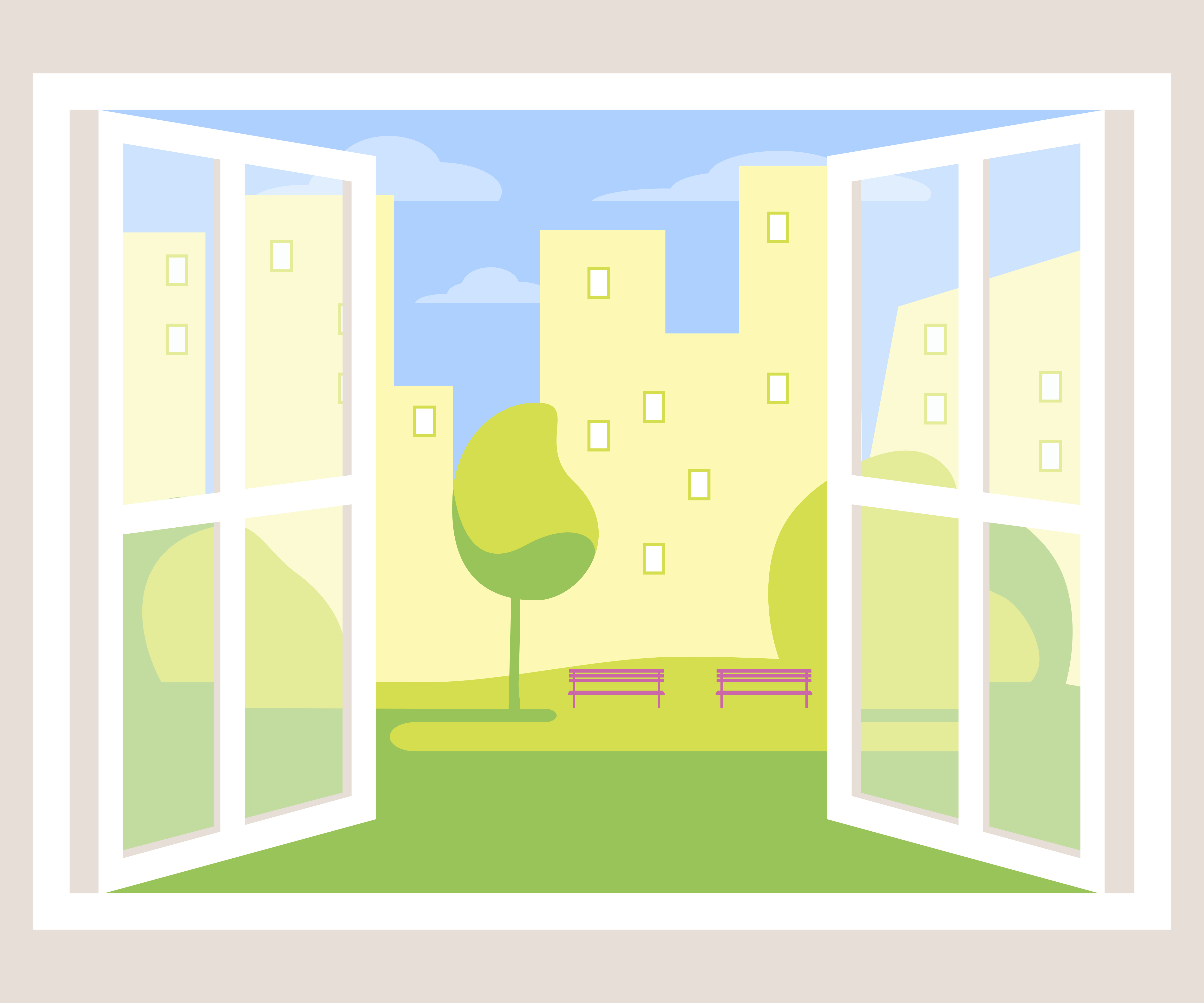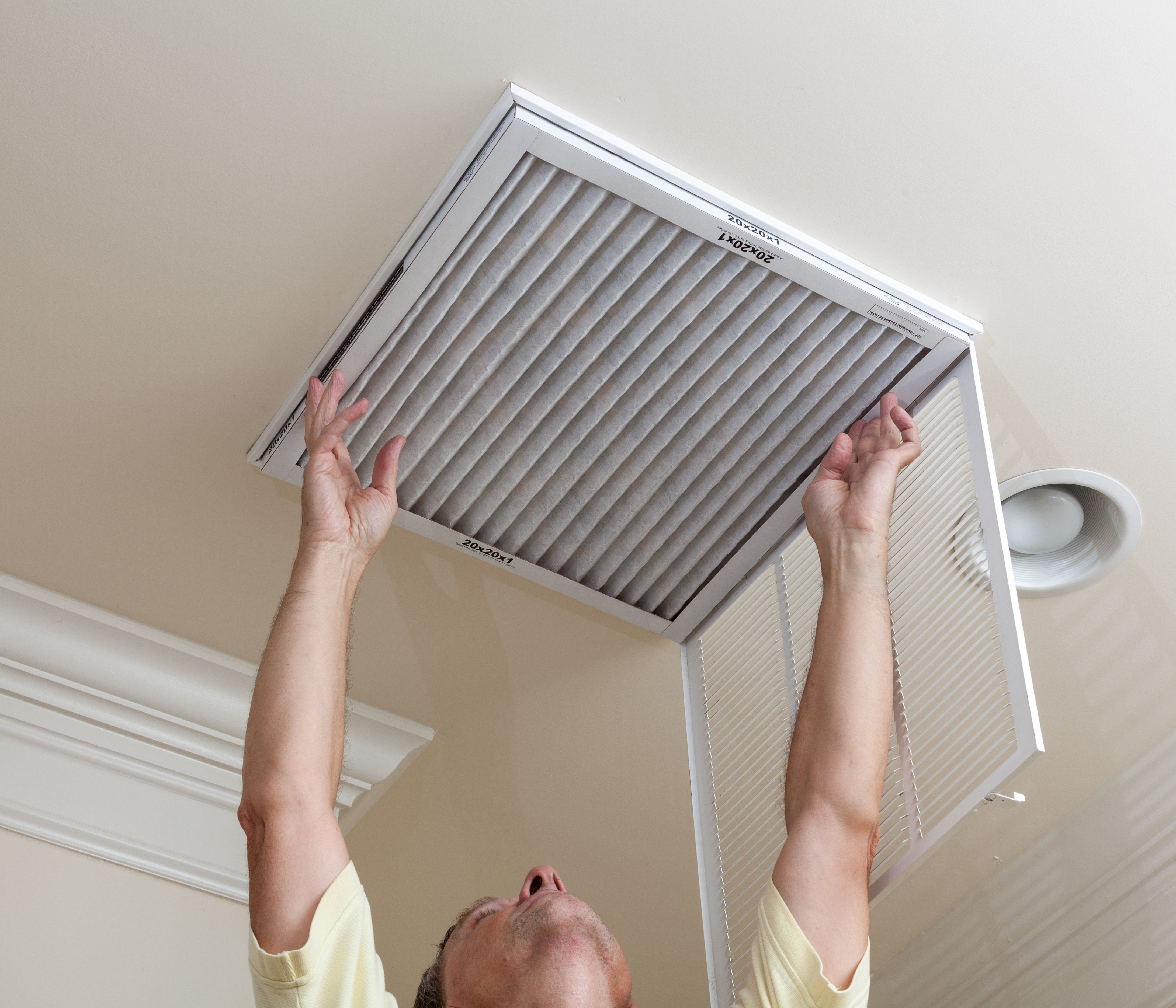
Ventilation & Air Cleaners
Ventilation
Ventilation is how outdoor air comes into a building. There are two types of ventilation. (1) Natural ventilation is from air flowing passively from outdoor to indoor spaces, such as through open windows or doors. (2) Mechanical ventilation actively moves outdoor air into a building. Most offices and other larger buildings, and many schools, have mechanical ventilation. As ventilation brings outdoor air into a building, it also moves air out of the building. Because ventilation reduces any pollutants that might have accumulated in the indoor air, this is helpful in improving indoor air quality (IAQ). Most homes have only natural ventilation, with outdoor air coming indoors through open doors and windows and, especially in older homes, also through cracks in walls. Heating and/or cooling systems in homes typically recirculate the same air after treating (heating or cooling) and are thus not part of an actual ventilation system because they do not bring in outdoor air.
Ventilation can improve indoor air quality and health
Ventilation is an important control strategy for maintaining good IAQ and improving poor IAQ. Properly designed ventilation can dilute particles and gases in indoor air and prevent contaminants from accumulating to levels that may cause health or comfort problems. It can also remove excessive moisture and prevent microbial growth.
Ventilation is best used together with efforts to remove or reduce the sources of the indoor contaminants., and, in some cases, air cleaning. In general, it is more efficient to eliminate or reduce sources of indoor pollutants or use local exhaust ventilation or air cleaning devices to remove them near their source than to control them by general ventilation of the whole home. For instance, exhaust fans over kitchen stoves and in bathrooms are effective ways to remove combustion products and excess moisture, respectively, from those point sources.
Ventilation rates that are too low (sometimes described as buildings being "too tight") can cause pollutants and moisture to build up to levels that may lead to unpleasant odors, discomfort, or even adverse health effects. Lower ventilation rates have been associated with more symptoms and reduced performance in school or work settings. Therefore, higher ventilation rates generally improve IAQ. However, there are two reasons not to provide exceedingly high ventilation levels:
1) Increasing the ventilation rate may increase energy costs if the outdoor or recirculated air must be "conditioned", that is, cooled or heated and perhaps dehumidified or humidified.
2) If a contaminant is present at higher levels in the outdoor air that is brought into a building (for example, ozone or pollutants exhausted from vehicles), then increasing the ventilation rate may bring in pollutants more harmful than those that are being removed, unless the air coming in is treated to remove the contaminants from outdoors.
In practice, building ventilation rates need to balance energy consumption with the known or expected health and comfort benefits. More information regarding the effect of ventilation rate on IAQ, health, and productivity can be found at the website of
Lawrence Berkeley National Laboratory's IAQ Scientific Findings Resource Bank.
Ventilation Codes
Standards and codes establish minimum ventilation rates (that is, the lowest recommended levels) to provide comfortable indoor environments and protect human health. The
American Society of Heating, Refrigerating and Air-Conditioning Engineers (ASHRAE) recommends minimum ventilation rates for different types of buildings and spaces (known as ASHRAE Standards 62.1 and 62.2), which are often incorporated into national, state, and local codes. Typically standards and codes specify the minimum ventilation rate per person or per unit of floor area. The minimum rate varies with the type of building or usage of the space; for example, a higher air change rate is recommended for health club weight rooms (26 cubic feet per minute per person, or cfm/person, based on default occupant density) than for office spaces (17 cfm/person) because the higher activity levels in the weight room will produce more occupant-related odors. The Code of Regulations identifies the minimum ventilation rates required for California buildings; see
California's Energy Efficiency Standards for Residential and Nonresidential Buildings.
California workers are fortunate in that not only must workplace mechanical ventilation systems be designed and built to meet code requirements, the systems must also: (i) be operated to provide at least the quantity of outdoor air required by code, (ii) be operated continuously during working hours (with exceptions), (iii) be inspected at least annually and problems corrected within a reasonable time, (iv) be maintained, and (v) records of all system inspections and maintenance be kept in writing and available within 48 hours of request (see the
Cal/OSHA Minimum Ventilation Standard).
Indoor air cleaning, including filtration, is one of the three commonly used methods for controlling indoor air pollution. The other two methods are source control (eliminating or minimizing the source of the pollution) and ventilation. Both portable air cleaning units for room-size applications and in-duct devices/filters that are installed in the heating, ventilation, and
 air conditioning (HVAC) system are readily available in the marketplace. Typically, these air cleaning units have filters that need to be replaced periodically, and it is important to note the age of filters in your system and replace as needed. For in-duct devices/filters, they could be implemented primarily for removing pollutants from outdoor air, in which they would be installed at the outdoor air intake, or for removing pollutants from recirculated indoor air. These air cleaners use various air cleaning technologies, such as filtration, adsorption by activated carbon, photocatalytic oxidation, or a combination of them.
air conditioning (HVAC) system are readily available in the marketplace. Typically, these air cleaning units have filters that need to be replaced periodically, and it is important to note the age of filters in your system and replace as needed. For in-duct devices/filters, they could be implemented primarily for removing pollutants from outdoor air, in which they would be installed at the outdoor air intake, or for removing pollutants from recirculated indoor air. These air cleaners use various air cleaning technologies, such as filtration, adsorption by activated carbon, photocatalytic oxidation, or a combination of them.
Air cleaning technologies are designed to remove either particulate pollutants or gaseous pollutants (i.e., VOCs). Therefore, it is important to know the target pollutants to be removed and identify the appropriate air cleaning devices. Moreover, different devices have different application requirements - for example, a clean air delivery rate (CADR) or efficiency, replacement schedule, etc.